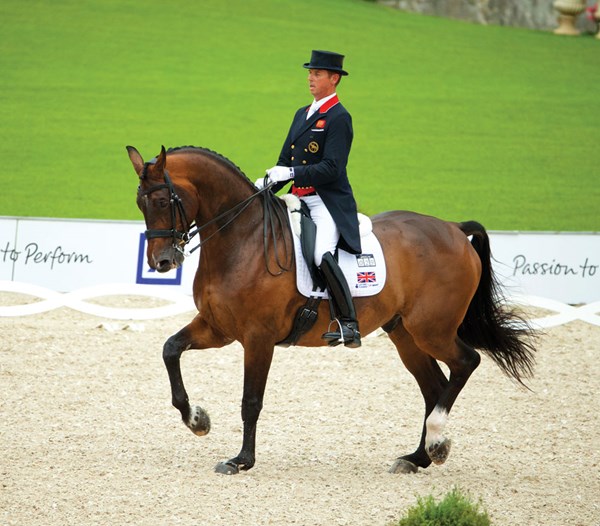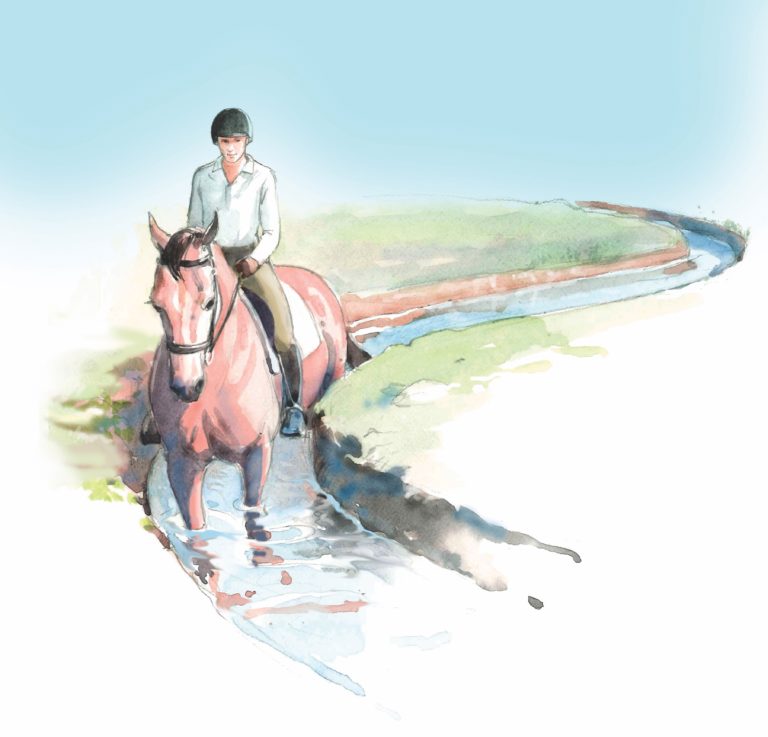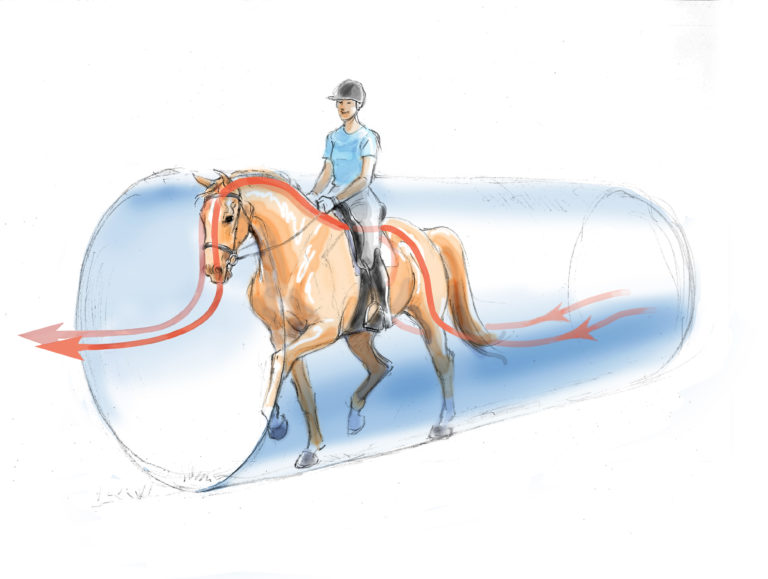
Q: I have seen the development of the piaffe out of the rein-back (under saddle, without a ground person). Could you explain this technique to me and what to look for when teaching it to my horse? It looks so easy.
Name withheld by request
Melissa Allen: A beautifully and correctly performed piaffe looks easy and effortless. In reality, however, the piaffe is one of the most advanced movements in dressage. The movement requires a high degree of collection, balance, impulsion and relaxation by the horse and advanced skill by the rider.
If you and your horse are at the level of training to start working on piaffe, a properly executed rein-back can be a helpful tool. The piaffe is a cadenced, very collected trot that stays nearly on the spot. A properly performed rein-back helps develop collection and teaches the horse to shift his center of gravity toward the hind end while lightening the forehand. This training and development are crucial to performing piaffe correctly.
Aiding for the rein-back is similar to aiding for the piaffe, which is why it is commonly used. Before beginning the rein-back, you should be able to halt your horse and trot forward if you ask for trot. To ask for rein-back, lighten your seat without leaning forward, slide your legs back slightly behind the girth and gently squeeze your hands, asking your horse to step backward. Your horse should maintain the connection to the bit, thinking forward.
The rein-back is done in diagonal pairs while the horse maintains an uphill balance and lowers the hindquarters as he steps backward with each foot. A good rein-back has several important qualities. As he increases engagement, the horse should step straight backward without getting crooked and stepping sideways. As you work on this, check that your horse thinks forward by frequently asking him to step forward out of the rein-back. If you feel any heaviness in the forehand or loss of rhythm, ask him to step forward again. Keeping this a forward-thinking process will help your horse focus on your seat, stay forward-thinking and know how many backward steps you want. Thinking forward will also prevent you from trying to pull your horse backward. When your horse is soft in your hands and connected from back to front, you are ready to ask for the piaffe out of the rein-back.
Remember, while the piaffe is a very collected trot, it is still a trotting movement. So again, thinking forward is crucial when teaching a horse to piaffe. To establish this forward-thinking mentality, first just trot out of the rein-back several times. Once your horse is thinking trot out, start asking for a smaller trot out, taking quicker, shorter steps before asking for true piaffe.
When your horse understands what you are asking and keeps the engagement of his hind legs, which you established from the rein-back, try increasing the quickness of the hind legs and take a few piaffe steps. Keep your lower legs slightly behind the girth and feel your horse’s rib cage. Start to ask for each hind leg to step under and forward. Aid with your right leg to ask the horse’s right hind to step up and aid with your left leg for the left hind to step up. Because your horse is already focused, is thinking forward, and your legs are gently draped around him, your leg aids can be subtle. You should not need to swing or try to push your horse’s hind legs into this movement. Just begin with a few steps of rein-back and immediately trot forward. As you increase the training, trot forward and come back to the exercise with the rein-back to piaffe and out into a forward trot. Remember to keep your seat light without leaning forward to allow room for your horse’s back to come up. Keep your hands soft but feel like your horse is moving equally into both reins at all times. Think about the rein-back aid to maintain the feel of your horse sitting from behind while you are asking for quick, active steps going forward. If your horse loses the forward thought, trot away and come back to the exercise.
Keeping your horse happy and successful in this work is essential. If your horse begins to get nervous or tense, think about just “playing” with the trot out of the rein-back. Rather than focus on the trot being on the spot, just see if you can get a few little trot steps. Remember to give your horse an out, which should always be forward, and praise your horse frequently for any success. Have fun mixing it up by doing halts with no rein-back or asking in different places. You might ask for a little piaffe work between sets instead of using this as a work set.
There are many exercises to develop piaffe, so assess whether your horse enjoys the rein-back-to-piaffe work and try something else. Come back to it if you feel your horse isn’t ready.
Melissa Allen is a USDF and FEI-certified instructor and a USDF bronze, silver and gold medalist. She trains out of Willow Creek Sport Horses in Raymore, Missouri.












